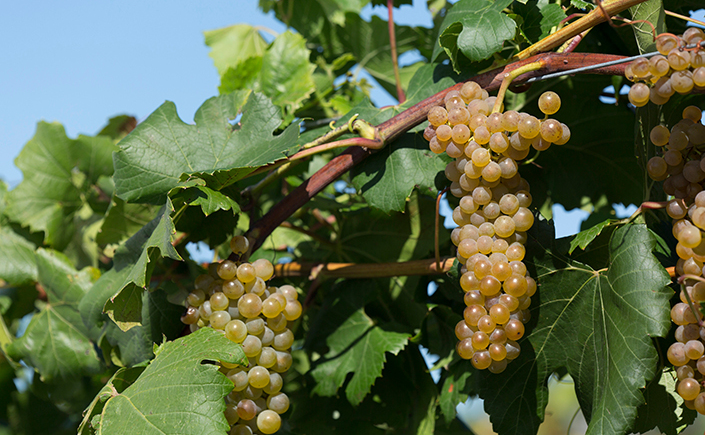
The Itasca wine grape
At the University of Minnesota, grape research hasn’t just sprouted a few new vines — it’s spurred the growth of an industry.
Earlier this month, the University released Itasca, a low-acidity, high-sugar grape for making dry white wines. Itasca is the latest in a line of cold-hardy wine grapes developed by U researchers that have played a crucial role in building the winery industry in regions where low temperatures used to hinder grape growing.
“The grape and wine industries of the north are thriving,” said William Gartner, Ph.D., professor with the Department of Applied Economics in the College of Food, Agricultural and Natural Resource Sciences. “Through its wine grape breeding program, the U of M has been primarily responsible for the emergence and growth of the northern grape wine industry.”
In 2011, cold-hardy wine grapes had a $401 million impact on the U.S. economy and generated 12,600 jobs in areas where grapes were previously not grown, according to a 2014 U of M study by Gartner and Brigid Tuck, senior economic impact analyst with U of M Extension. Since the Frontenac grape was released in 1996, producers in 12 states have planted an estimated 3,260 acres of U cold-hardy varieties.
In addition to the new grape varieties, Gartner said the cold-hardy grape industry has also benefited from policies that allow farm wineries to sell directly to the public, requirements for locally grown content at vineyards and increased tourism to regional wineries.
As for Itasca, the U’s Office for Technology Commercialization has helped the grape’s developers apply for a patent and license the grape to nurseries, which will propagate it and begin selling it in 2017. Itasca joins U of M-developed grapes like Frontenac, La Crescent and Marquette for use on the table or in wine, juice and jelly.
For more information on Itasca, see the press release.
Photo credit: College of Food, Agricultural and Natural Resource Sciences